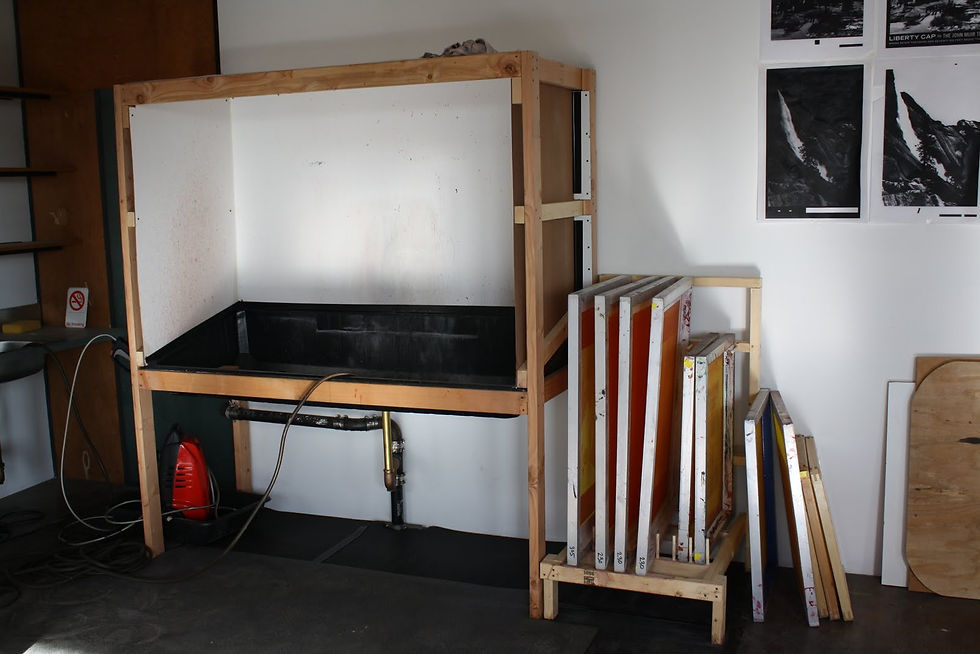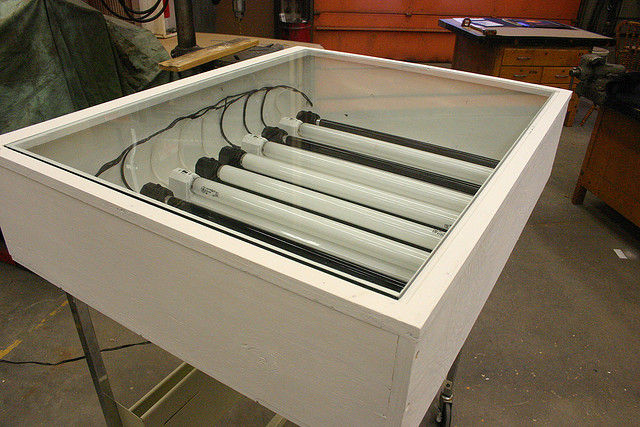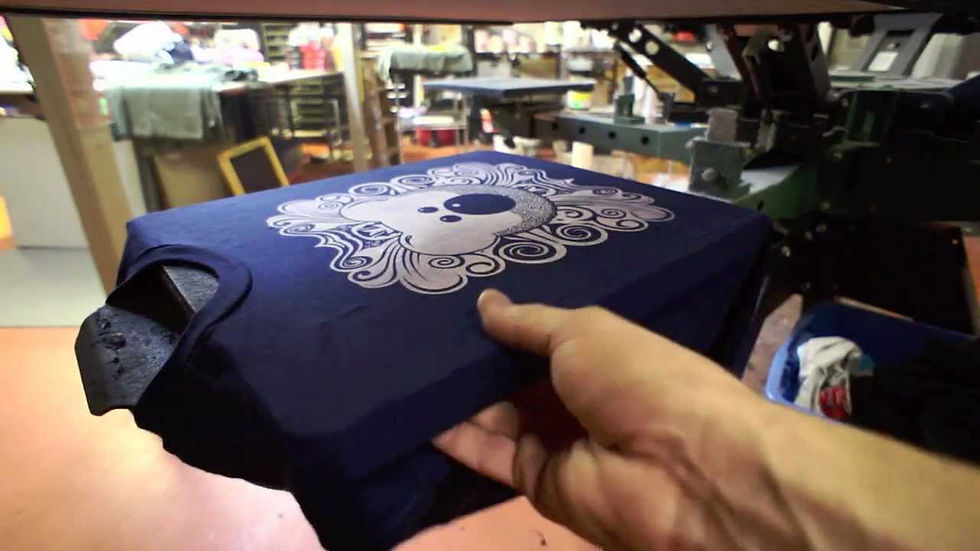Screen Printing Basics: Burning Images
- Printiful.net

- Feb 10, 2019
- 3 min read
One of the most common issues we have witnessed as a screen-printing supplier in the industry is the process of burning images into screens. Creating a proper image is not a process that you should take lightly for it will greatly define the success and quality of your printing. Poor decisions in this process can lead to various problems including a weak stencil that doesn't hold up during prints, loss of detail in images, the emulsion getting locked up in the screen, spending a lot of on-press time covering pinholes, and many other headaches. Here are some tips that can help!

Where Do I Wash Out?
It is imperative to wash your image out in an area that will not compromise the integrity of the image. An ideal way to wash your image out is in a washout booth with a low-pressure nozzle inside a building that is not exposed to a lot of UV light. I have encountered many customers who are struggling with getting their image to appear only to find out they are washing the image outside in the sunlight! Because the sun is blasting UV towards the Earth, the image you just burned will get overexposed and will not come out. Don’t coat your screens outside either!

Over And Under
Nailing the correct exposure time for your emulsion can be very difficult, but at the same time very easy. It is very important to ask your sales rep or supplier about their recommendation on how long you should expose your emulsion. You can also use an exposing calculator. If some or none of the image comes out during wash out, you are experiencing an overexposed screen. Overexposure can result in the loss of detail or the lack of any image and is caused by exposing your emulsion to UV light for too long. Underexposure can result in a lack of sharp lines, pinholes, or your image completely washing away, and is caused by exposing your emulsion to UV light for too short of a period. Underexposing is also a common cause of emulsion getting locked into the screen and becoming hard to reclaim.

Great Film, Great Responsibility
One must have very densely printed film to have the most success in burning a successful image into your screen. If you can see light through the printed area of your film, so can your emulsion. Using the correct methods to print film is very important to the success of your image. Toner aid can be used on the film after printing with a laser printer. All-black ink cartridges can be used in inkjet printers to ensure dark prints. Always check the film before exposing to avoid any issues that will incur.

Emulsions
With there being many different types of emulsions available, always check with your sales rep on the specs of the emulsion you choose. Here are the different types of emulsions:
1. Pure Photopolymer: Ready-to-use direct emulsions that provide ultra-fast exposure times (reportedly five times faster than diazo, and two times as fast as dual-cures)
Excellent resolution and definition
Pre-sensitized
Shelf life is up to two years
Stirring is not required
Handle under yellow safe-light conditions
2. Dual-Cure: Superior resolution and definition capabilities
Has resistance to both solvent and water-based inks
Add the diazo solution and mix thoroughly
Handle under yellow safe-light conditions
3. Diazo: Formulated for use with water-based, solvent, and plastisol inks
Produce stencils with excellent mechanical resistance, good resolution, and edge definition
Add the diazo solution and mix thoroughly
Handle under yellow safelight conditions
Always be mindful of the type of emulsion you are using while you are exposing your screen! We, here at Printiful, like to use Chrmo Tech WR (water resistance emulsion).

Light Source
Like emulsion, different light sources result in different exposure times for your screens. When buying or making an exposure unit, please refer to a sales rep on how that unit is designed to work. When exposing screens, make sure that the distance and range of light are accurate for your set up.
Keep these tips in mind when creating your image for your next job!




Comments